How the viticultural landscape is changing
Last October I visited Herdade do Mouchão, a winery in the Alentejo, to find out why its white wines have such enticing freshness despite the blisteringly hot and water-deprived summers. To my surprise, the owner, Iain Reynolds-Richardson, told me that most of his vines grow on the valley floor, where the water table is two meters below the surface. The proximity of water allows the grapes to retain their acidity. He is going to give up his remaining vineyards that are located on the hillsides flanking the valley. The soils here are too dry and too poor, he explained. It sounded all quite contrary to what we learned: vines planted on hillsides with poor soils that force the vines to root deeply in search of water produce the best quality grapes. But with accelerating climate change and water deprivation, everything seems in flux. In several ways, water, or the lack thereof, is shaping a new viticultural landscape.
At the 2024 edition of the Arlberg Weinberg Symposium – a four-day get-together for wine professionals in Lech, Austria, the posh wine and gastro capital of the Alps – water was the theme of one of the conference main sessions.
The situation in Sicily
As a consequence of climate change, water, in some parts of the world still seen as a commodity, is becoming increasingly scarce. Arianna Occhipinti, one of the presenters at the conference, who comes from the eponymous winery in southeastern Sicily, told us that the amount of rainfall in her corner of the world has decreased by 40 percent between 2003 and 2023. Moreover, every month from September 2023 until August 2024 the average minimum temperature was well above the average of the previous 20 years.
In many parts of (southern) Europe, the amount of annual precipitation doesn’t only decrease, it also falls more concentrated. In other words, when it falls, it falls in (extremely) large quantities (with longer dry periods in between), causing the rainwater to run off rather than being absorbed by the soil. This year the Spanish east
coast was shaken by one of its worst floods in living memory. “Although the rainstorms hit hardest in the province of Valencia, in the Priorat, south of Barcelona, intense rainfall also created havoc,” as Sara Pérez of Mas Martinet, another speaker at the conference, said.
Arianna Occhipinti ©Az. Agr. Arianna Occhipinti
Priorat’s DNA is fire
The Priorat is an extremely hot winegrowing area. Pérez pictured an almost hellish environment: The number of days per year with maximum temperatures that reach or exceed 32 degrees Celsius has increased from 32 in 1994 to 128 in 2022. In an appellation that was already known for its heady wines, it is now almost impossible to achieve moderate alcohol – 16% abv is becoming the rule rather than the exception.
For Pérez, who wants to make light to medium weight wines, it was code red. “Priorat’s DNA is fire,” she says, and continues rhetorically: “Do we want to temper the fire or increase it?” Adaptation measures were required. To the incomprehension of her neighbors, she started to cover her vineyards with a layer of straw. Exhausting work, she assured us. But it paid off. When she was summoned to come home from vacation because her neighbors had started harvesting, she found out upon return that the temperature of the topsoil in her vineyards was considerably lower and the humidity higher, slowing down the ripening and confirming the validity of her decision.
Sara Pérez of Mas Martinet ©Bart de Vries
Breaking engrained habits
But a cover of hay wasn’t going to be enough, she realized and turned to Marco Simonit and Pedro Parra for advice. “You need a person that can break your engrained habits and ways of thinking.” Parra helped her adjust her pruning methods. As big canopies require more water, she learned, her bush vines, generally considered to provide shade for the grape bunches, had to remain smaller. In order to achieve this, she was instructed to prune the main fruit-bearing cane after the fifth leaf. Despite her initial fear, she did what she was told to do. Soon the vines started to sprout lateral shoots from the part of the cane above the fruit. Those lateral shoots developed an umbrella-like screen protecting the vines from the sun, while keeping the canopy small and thus the amount of required water low.
Earlier, Alain Deloire, professor emeritus from Montpellier University, had lectured us on the functioning of the grapevine and its berries in relation to climate. To produce a liter of wine, a vine needs 250 to 350 liters of water. A whopping 98 percent of a vine’s water uptake transpires through the stomata, minuscule openings on the leaves for the exchange of oxygen and carbon dioxide on the one hand, and water vapor on the other. (More on vine botany, see sidebar 1.)
Other measures Pérez took were to add wool to the soil to retain water for the new vines and to plant them using the keyline principle. Keyline aims to rapidly increase the amount of organic material in the soil (and thus improve its water retention capacity) using the topographical features of the land. A part of it is the more efficient absorption of run-off water. (See sidebar 2.)
To temper the fire further, in the cellar Pérez only uses vessels made of cool materials like concrete, clay and glass.
Key Line map ©Linea Clave + Mas Martinet
Holistic approach
Back in Sicily, Occhipinti relies on more familiar practices. For the cultivation of grapes for her white wines, she found a good site higher up in the hills, using indigenous varieties that are better suited to deal with heat and drought, while retaining sufficient acidity. Emphasizing the importance of creating basins for harvesting water during the rainy season, she also stresses the importance of a holistic approach. Without wanting to compromise the all-important hygiene in the cellar, water use should be critically considered, piping should be checked for leakages and education on the topic should be improved.
Deloire and Jamie Goode, the session’s moderator, pointed out several other ways to handle water stress. One of them is to plant trees in the vineyard, a new trend that reduces the temperature and water evaporation. However, not every type of tree is suitable. There are also initiatives to accelerate clonal selection, but as Goode says, it’s a numbers game. Many clones need to be created in order to find one with the desired traits, that is having the ability to deal with heat and low water availability. In general, they warn, it is not advisable to sit back and wait for better clones. Deloire doesn’t expect them in the next fifty years.
Sunscreen
Developing new training systems may also help in the adaptation to the changing climate. Reynolds-Richardson told me he worked on an overhanging canopy that works as a sunscreen. As it requires more space between the rows, applying it to existing vineyards is complicated. Whatever measure you take, Deloire emphasizes, none of them is sufficient on its own. Depending on the local situation, a combination of measures is necessary, and in some cases, vineyards may have to be given up.
One of the most eye-opening things about the vine’s underground physiology came from Deloire. Contrary to what many think, the root system of a vine is seldomly much older than ten years, even if the vine is ancient. The fine roots, the most important for the uptake of water, get renewed continuously. No less than 80 percent of the roots sit between 20 and 80 cm below the surface. Hence, deep aquifers aren’t a panacea.
This brings me back to Herdade do Mouchão, where Iain Reynolds-Richardson’s decision to concentrate his vines in the valley all of sudden started to make more sense. But even there the vines need some irrigation. As Deloire confirmed, Reynolds-Richardson believes providing a large quantity of water only a few times per season leads to better results. Reynolds-Richardson said: “A larger amount of water infiltrates deeper into the soil thus creating a bridge to the water-carrying layer two meters below the surface. This way the roots are encouraged to find their way down.”
If Reynolds-Richardson’s, Pérez’s and Occhipinti’s actions and Goode’s and Deloire’s expertise are indications of how climate change will impact the vineyard landscape in water restricted areas, we will witness drastic changes over the next decades.
Sidebar 1: Vine botany
For a deeper understanding, here are some key points from the introduction on the basics of vine botany given by Jamie Goode, the session’s moderator.
● Through the leaves’ stomata, meant to let gas, a residual product of photosynthesis, escape, the vine also loses water. Although the vine, by closing its stomata, can go into dormancy when it’s too hot, it cannot survive, unlike mosses, without water. Some varieties may deal better with drought than others, but drought resistance does not exist.
● Plants generally have two strategies to deal with water stress, avoidance – the plant knows how to remain hydrated, e.g. by closing the stomata early or increasing water uptake by growing a deeper root system – and tolerance – the plant develops characteristics that allow a longer period of drought, e.g. through reinforcement of the tissue or decreased chance of embolism (the stop of the sap flow by air/vapor bubbles in the xylem or vascular tissue of the plant).
● As the roots give essential signals to the plant, the choice of rootstock is an important decision when creating a new vineyard.
● Contrary to massal selection, layering maintains the epigenetic characteristics (such as how the plant regulates its water consumption) of the plant. While organic matter in the soil retains water, too much of it allows the vine to grow a big canopy, which requires too much water in the hottest months of the year.
Sidebar 2: Keyline
Keyline was developed in Australia by P.A. Yeomans and comprises of a set of site layout principles based on the natural topography of the land. With regards to water, the basic premises are that water always runs towards the lowest point, the valley floor, and that the faster the water runs off, the higher the erosion is. The aim is to slow down the run-off and allow the water to be absorbed by the soil. One achieves this by ploughing in such a way that rainwater is inclined to run away from the valley floor. The keyline, after which this practice is called, is the contour that runs through the so-called keypoint, the point where the surface starts to steepen. Taking the keyline as a base and given that the contour lines are seldomly equidistant, if one ploughs parallel to the keyline, the furrows gradually divert from the contour lines. In other words, the furrows need to be drawn in such a way that they decline away from the valley. This effectively slows down the run-off and diffuses the water over a larger surface.
Main photo: Use of hay at Mas Martinet ©Mas Martinet
A version of this article has been published in Hungary’s main wine magazine Vince (issue 5, 2025) and will be published in the Norwegian magazine Apéritif at a later date.
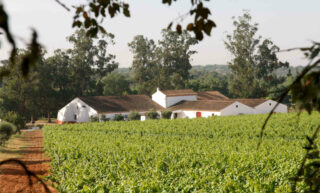
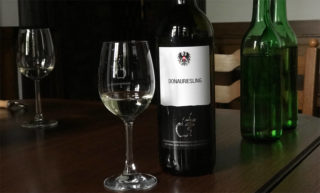
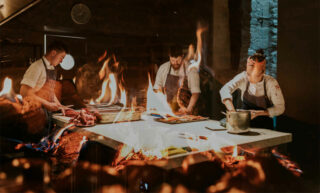
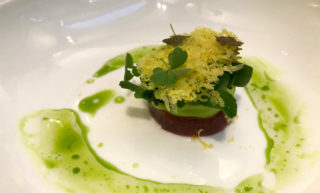
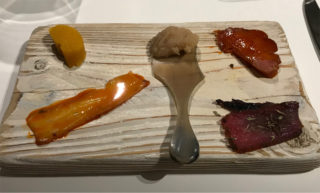
Comments